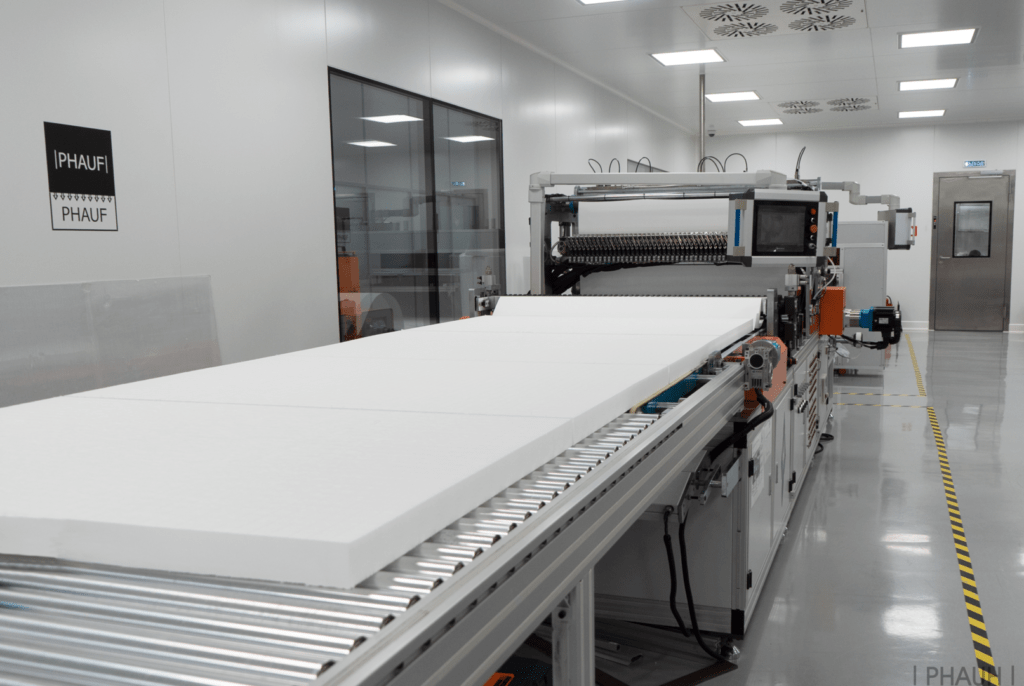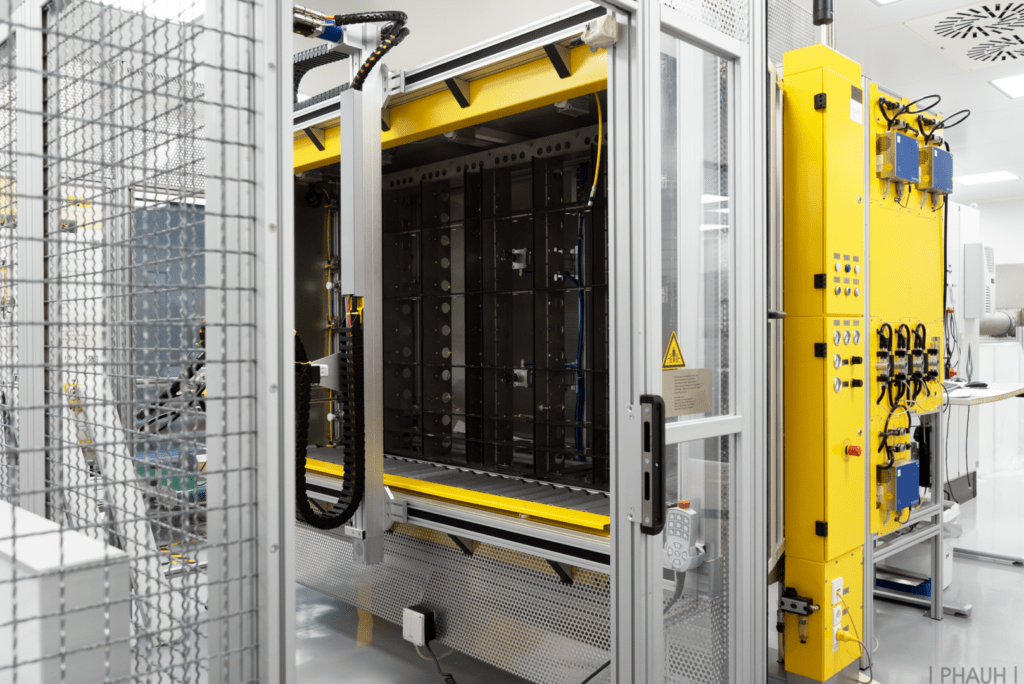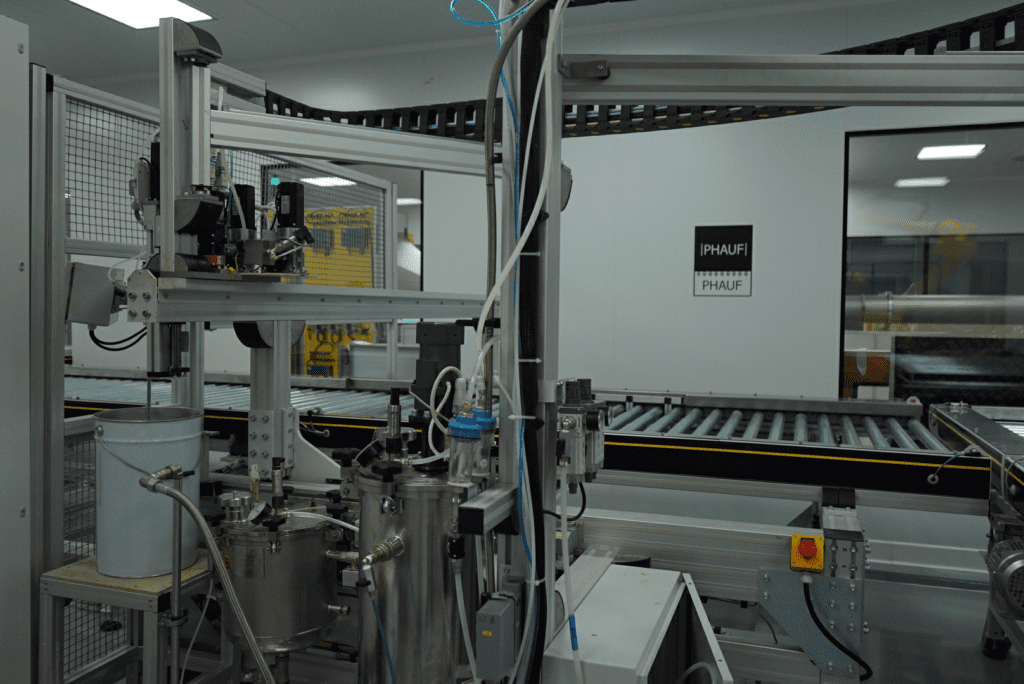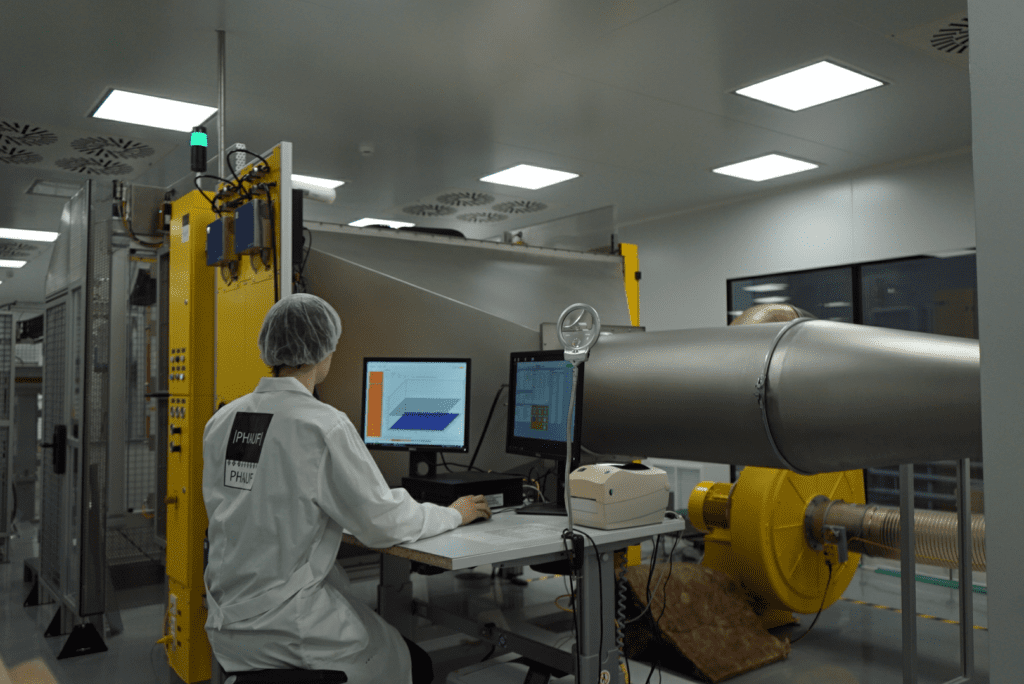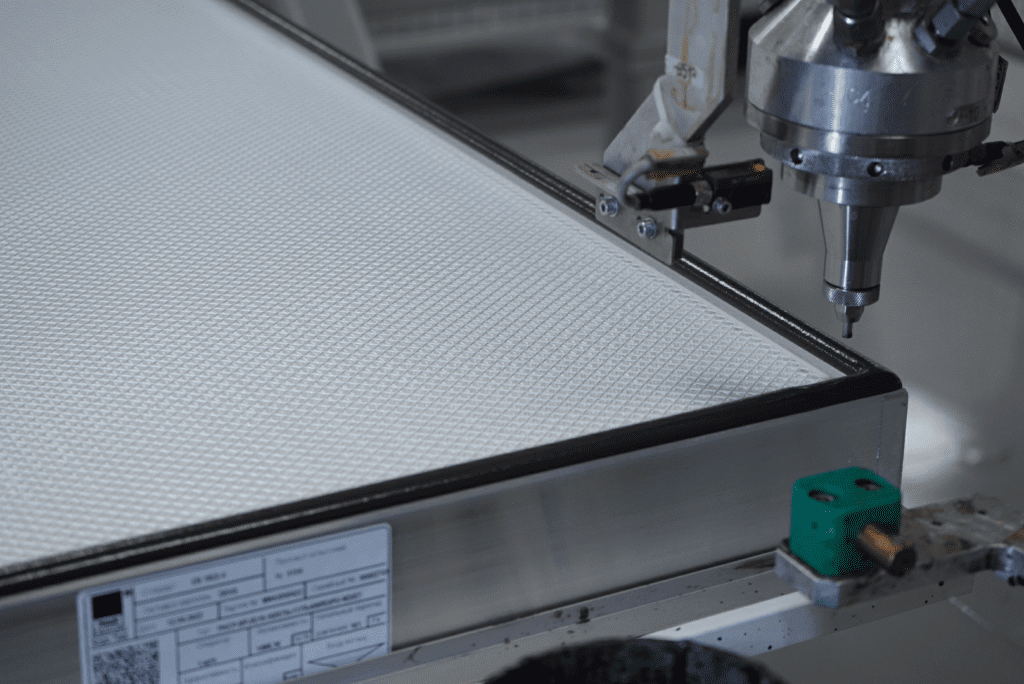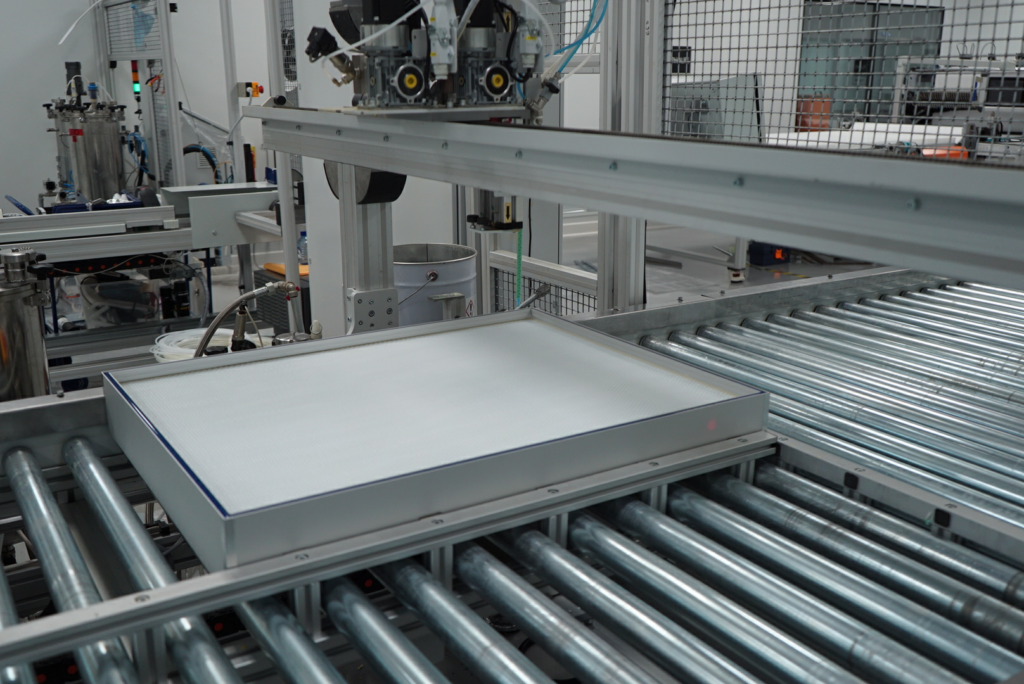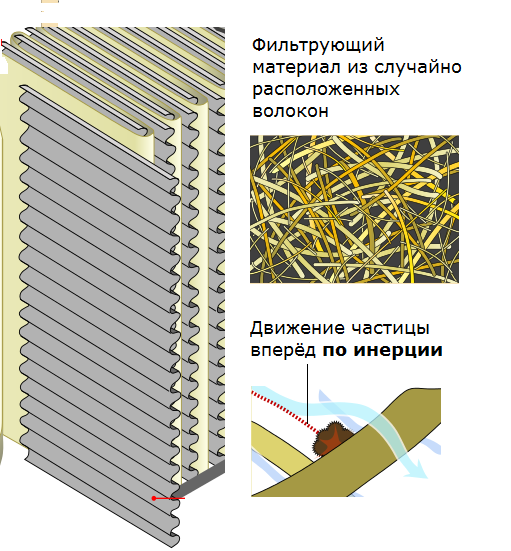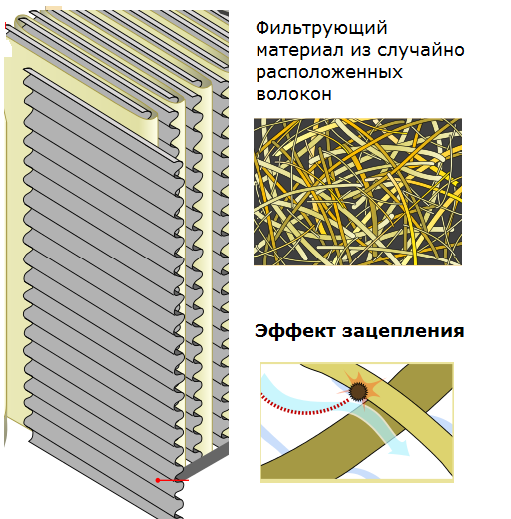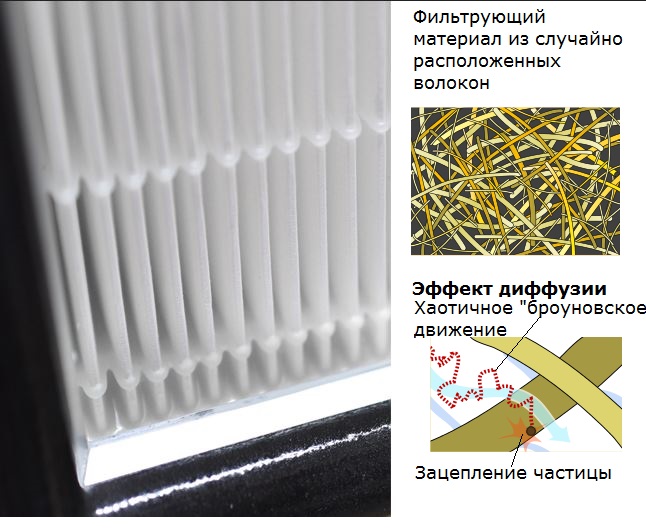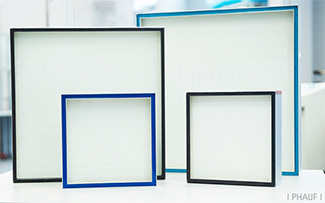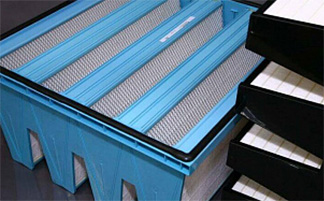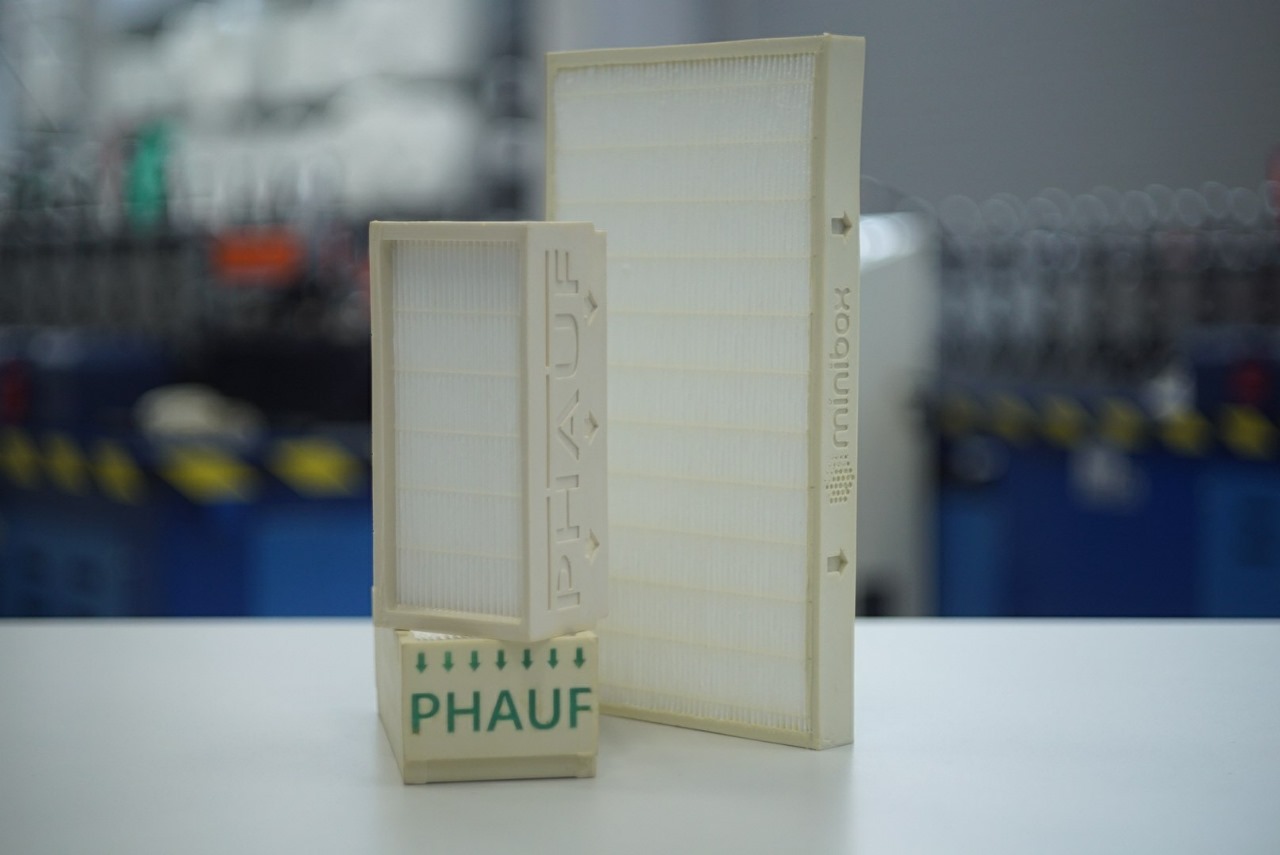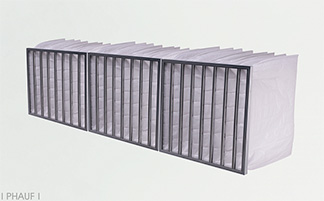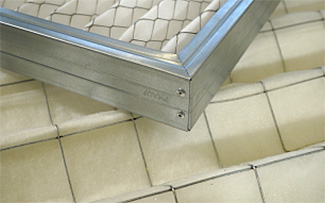EPA/HEPA/ULPA filters (PHCP Series)

| Width, mm | 305 | 610 | 610 | 915 | 1220 | 915 | 1220 | 1220 |
| Height, mm | 305 | 305 | 610 | 610 | 610 | 915 | 915 | 1220 |
| Depth, mm | 69 | 69 | 69 | 69 | 69 | 69 | 69 | 69 |
| Filter surface area, m² |
3.0 | 6.1 | 12.1 | 18.1 | 24.2 | 27.3 | 36.4 | 48.4 |
| Nominal capacity, m³/h |
150 | 300 | 605 | 905 | 1205 | 1355 | 1805 | 2410 |

| Width, mm | 305 | 610 | 610 | 915 | 1220 | 915 | 1220 | 1220 |
| Height, mm | 305 | 305 | 610 | 610 | 610 | 915 | 915 | 1220 |
| Depth, mm | 69 | 69 | 69 | 69 | 69 | 69 | 69 | 69 |
| Filter surface area, m² |
3.0 | 6.1 | 12.1 | 18.1 | 24.2 | 27.3 | 36.4 | 48.4 |
| Nominal capacity, m³/h |
150 | 300 | 605 | 905 | 1205 | 1355 | 1805 | 2410 |

| Width, mm | 305 | 610 | 610 | 915 | 1220 | 915 | 1220 | 1220 |
| Height, mm | 305 | 305 | 610 | 610 | 610 | 915 | 915 | 1220 |
| Depth, mm | 69 | 69 | 69 | 69 | 69 | 69 | 69 | 69 |
| Filter surface area, m² |
3.0 | 6.1 | 12.1 | 18.1 | 24.2 | 27.3 | 36.4 | 48.4 |
| Nominal capacity, m³/h |
150 | 300 | 605 | 905 | 1205 | 1355 | 1805 | 2410 |

| Width, mm | 305 | 610 | 610 | 915 | 1220 | 915 | 1220 | 1220 |
| Height, mm | 305 | 305 | 610 | 610 | 610 | 915 | 915 | 1220 |
| Depth, mm | 69 | 69 | 69 | 69 | 69 | 69 | 69 | 69 |
| Filter surface area, m² |
3.0 | 6.1 | 12.1 | 18.1 | 24.2 | 27.3 | 36.4 | 48.4 |
| Nominal capacity, m³/h |
150 | 300 | 605 | 905 | 1205 | 1355 | 1805 | 2410 |

| Width, mm | 305 | 610 | 610 | 915 | 1220 | 915 | 1220 | 1220 |
| Height, mm | 305 | 305 | 610 | 610 | 610 | 915 | 915 | 1220 |
| Depth, mm | 69 | 69 | 69 | 69 | 69 | 69 | 69 | 69 |
| Filter surface area, m² |
3.0 | 6.1 | 12.1 | 18.1 | 24.2 | 27.3 | 36.4 | 48.4 |
| Nominal capacity, m³/h |
150 | 300 | 605 | 905 | 1205 | 1355 | 1805 | 2410 |

| Width, mm | 305 | 610 | 610 | 915 | 1220 | 915 | 1220 | 1220 |
| Height, mm | 305 | 305 | 610 | 610 | 610 | 915 | 915 | 1220 |
| Depth, mm | 78 | 78 | 78 | 78 | 78 | 78 | 78 | 78 |
| Filter surface area, m² |
3.0 | 6.1 | 12.1 | 18.1 | 24.2 | 27.3 | 36.4 | 48.4 |
| Nominal capacity, m³/h |
150 | 300 | 605 | 905 | 1205 | 1355 | 1805 | 2410 |

| Width, mm | 305 | 610 | 610 | 915 | 1220 | 915 | 1220 | 1220 |
| Height, mm | 305 | 305 | 610 | 610 | 610 | 915 | 915 | 1220 |
| Depth, mm | 78 | 78 | 78 | 78 | 78 | 78 | 78 | 78 |
| Filter surface area, m² |
3.0 | 6.1 | 12.1 | 18.1 | 24.2 | 27.3 | 36.4 | 48.4 |
| Nominal capacity, m³/h |
150 | 300 | 605 | 905 | 1205 | 1355 | 1805 | 2410 |

| Width, mm | 305 | 610 | 610 | 915 | 1220 | 915 | 1220 | 1220 |
| Height, mm | 305 | 305 | 610 | 610 | 610 | 915 | 915 | 1220 |
| Depth, mm | 78 | 78 | 78 | 78 | 78 | 78 | 78 | 78 |
| Filter surface area, m² |
3.0 | 6.1 | 12.1 | 18.1 | 24.2 | 27.3 | 36.4 | 48.4 |
| Nominal capacity, m³/h |
150 | 300 | 605 | 905 | 1205 | 1355 | 1805 | 2410 |

| Width, mm | 305 | 610 | 610 | 915 | 1220 | 915 | 1220 | 1220 |
| Height, mm | 305 | 305 | 610 | 610 | 610 | 915 | 915 | 1220 |
| Depth, mm | 78 | 78 | 78 | 78 | 78 | 78 | 78 | 78 |
| Filter surface area, m² |
3.0 | 6.1 | 12.1 | 18.1 | 24.2 | 27.3 | 36.4 | 48.4 |
| Nominal capacity, m³/h |
150 | 300 | 605 | 905 | 1205 | 1355 | 1805 | 2410 |

| Width, mm | 305 | 610 | 610 | 915 | 1220 | 915 | 1220 | 1220 |
| Height, mm | 305 | 305 | 610 | 610 | 610 | 915 | 915 | 1220 |
| Depth, mm | 78 | 78 | 78 | 78 | 78 | 78 | 78 | 78 |
| Filter surface area, m² |
3.0 | 6.1 | 12.1 | 18.1 | 24.2 | 27.3 | 36.4 | 48.4 |
| Nominal capacity, m³/h |
150 | 300 | 605 | 905 | 1205 | 1355 | 1805 | 2410 |

| Width, mm | 305 | 610 | 610 | 915 | 1220 | 915 | 1220 | 1220 |
| Height, mm | 305 | 305 | 610 | 610 | 610 | 915 | 915 | 1220 |
| Depth, mm | 90 | 90 | 90 | 90 | 90 | 90 | 90 | 90 |
| Filter surface area, m² |
3.0 | 6.1 | 12.1 | 18.1 | 24.2 | 27.3 | 36.4 | 48.4 |
| Nominal capacity, m³/h |
150 | 300 | 605 | 905 | 1205 | 1355 | 1805 | 2410 |

| Width, mm | 305 | 610 | 610 | 915 | 1220 | 915 | 1220 | 1220 |
| Height, mm | 305 | 305 | 610 | 610 | 610 | 915 | 915 | 1220 |
| Depth, mm | 90 | 90 | 90 | 90 | 90 | 90 | 90 | 90 |
| Filter surface area, m² |
3.0 | 6.1 | 12.1 | 18.1 | 24.2 | 27.3 | 36.4 | 48.4 |
| Nominal capacity, m³/h |
150 | 300 | 605 | 905 | 1205 | 1355 | 1805 | 2410 |
ORDER FORM

INFORMATION
High-efficiency PHAUF® air filters are designed to remove suspended particles in ventilation systems of cleanrooms of ISO classes 1-9 (Interstate Standard ISO 14644-1-2002), and are also used in supply and exhaust systems to meet special air purity requirements. They comply with the highest sanitary and hygienic standards for indoor air quality.
These filters are used in fields such as pharmaceuticals, medicine, microelectronics, nuclear energy, and the food industry. PHAUF® filters are manufactured using the patented «Zero discharge»® technology, which includes: automated assembly and testing on an automatic AFS 150 scan-tester (TOPAS, GmbH), followed by individual vacuum packaging in an ISO 7 class cleanroom.
About HEPA Absolute Air Filters
Poor indoor air quality negatively affects the health of people present, the efficiency of various technological processes, and the reliability of manufactured products.
The level of air pollution is determined by the amount of fine suspended contaminants — substances of living and non-living nature, known as Particulate Matter (PM) aerosol suspensions.
Classification of Air Particles
| Designation | Particle size in diameter | Description |
| РМ 10 | Less than 10 μm (microns) | Settle quickly (dust, smoke, soot, etc.) |
| РМ 2.5 (FSP) |
Less than 2.5 μm | Remain suspended in the air for a long time. Capable of penetrating biological membranes (fine dust, tobacco and exhaust smoke, heavy metal compounds, pollen, allergens, fungi, dust mites, microorganisms, spores, etc.) |
| РМ 1 | Less than 1 μm | Constantly circulate in the air. Easily penetrate biological membranes (bacteria, viruses, gas molecules, toxins, radioactive particles) |
At the preliminary purification stage, the air supplied to the room is cleaned of flying insects, animal hair, dirt, dust, and «large» PM particles larger than 5.0 μm.
For this purpose, supply and exhaust systems in buildings and enterprises are equipped with coarse filtration (class G1-4), medium filtration (class M5-6), and fine filtration (class F7-9) filters.
However, in rooms with increased requirements for microclimate conditions or with an assigned cleanliness class, additional ultra-high efficiency filtration of air masses is needed.
Modern HEPA (High Efficiency Particulate Air) class absolute filters are capable of performing this task.
By capturing PM2.5 and PM1 contaminants smaller than 0.1 μm, they practically sterilize the air.
HEPA filters are mandatory at the final stage of air purification in so-called «cleanrooms» of ISO classes 1-9 and associated specially controlled areas.
Air purity levels (based on the content of suspended particles) are established and fixed by the Interstate Standard ISO 14644-1-2002.
HEPA Filter Purification Classes and Efficiency
In terms of their effectiveness, HEPA family filters are divided into three groups: EPA, HEPA, and ULPA.
Their efficiency and purification class are determined by the number of «most penetrating particles» (MPPS — Most Penetrating Particle Size) released back into the environment per liter of air. The size of nano-particles «capable of passing through» a HEPA filter is about 0.3 μm and smaller.
HEPA Filter Purification Classes
| HEPA filter group | Filtration class | Efficiency (integral value, %) | Particle penetration (integral value, %) |
| ЕРА | Е10 | ≥85 | ≤15 |
| ЕРА | Е11 | ≥95 | ≤5,0 |
| ЕРА | Е12 | ≥99,5 | ≤0,5 |
| НЕРА | Н13 | ≥99,95 | ≤0,05 |
| НЕРА | Н14 | ≥99,995 | ≤0,005 |
| ULPA | U15 | ≥99,9995 | ≤0,0005 |
| ULPA | U16 | ≥99,99995 | ≤0,00005 |
| ULPA | U17 | ≥99,999995 | ≤0,000005 |
Where High and Ultra-High Efficiency Filters are Used
As mentioned earlier, HEPA filters in ventilation systems are designed to absorb the tiniest contaminants from supply and exhaust air at the final stage of purification.
Absolute filters are used in industry segments such as:
- food and chemical industries;
- precision engineering;
- aerospace industry;
- pharmaceuticals;
- microbiology;
- nuclear energy;
- microelectronics and others.
They are essential for air sterilization in special zones of medical facilities:
- intensive care units and operating rooms;
- delivery rooms:
- wards for newborns, premature and injured children;
- sterile zones of central sterilization departments (CSD);
- infectious disease hospitals and dispensaries;
- clinics, biochemical, physical, biological laboratories, etc.
They are used in high-quality equipment for workplace air aspiration, operator and environmental protection, such as exhaust and laminar flow cabinets.
Equipping multi-stage filtration ventilation systems with high-efficiency filters improves the quality of space in residential, museum, and other premises with high sanitary and hygienic requirements.
What Filter Materials are Used?
The filter media for ventilation HEPA filters is usually fine glass paper.
The structure of glass paper consists of randomly arranged ultra-fine glass-plastic fibers with a diameter of 0.5-6.5 μm. The distance between them is no more than 40 μm. For comparison, the diameter of a human hair is approximately 80-120 μm.
The filter media is impregnated with an antibacterial agent to suppress the activity of microorganisms absorbed by it.
Design and Construction of HEPA Air Filters
The performance of ventilation purifiers is higher the larger the area of the permeable surface.
Therefore, the filter element in a HEPA filter is pleated – folded like an accordion.
To keep the pleats uniform, prevent them from sticking together, and maintain airflow, they are separated by a separator made of aluminum foil or synthetic fibers.
The pleated filter pack is enclosed in a rigid frame of reinforced construction.
The frame, depending on the application conditions, can be made of aluminum alloy, stainless or galvanized steel, or polished MDF.
The reliability and tightness of the filter pack attachment to the frame perimeter is ensured by a special polyurethane adhesive.
Each unit of finished product is tested on a stand.
A computerized scanner checks the integrity of the product and the efficiency of the filter media.
A gel or foam sealant is applied to one or both sides of the outer perimeter of the filter housing. It ensures an airtight fit of the filter to the elements of the ventilation system during device installation.
The principle of operation of absolute air filters – main mechanisms
It’s a big mistake to think that an absolute filter «strains» microparticles from the airflow like a «tea strainer.»
After all, the distance between the randomly located fibers of the filter media is significantly larger than the size of the PM2.5 and especially PM1 contaminants it captures.
Of course, the sieve effect is also inherent in the absolute filter. But «catching» large particles leads to its rapid contamination and failure.
Therefore, using an ultra-fine device in «coarse sieve» mode is harmful and impractical.
The operating principle of a high-efficiency HEPA filter is based on adhesion.
What is adhesion?
Adhesion or sticking (adhaesio) is the physical phenomenon of «gluing» surfaces of heterogeneous or homogeneous (in the case of autoadhesion) liquid or solid bodies.
The adhesion effect is due to intermolecular and interatomic interaction forces (Van der Waals forces).
For microparticles, the tensile strength of adhesive sticking exceeds 600 Pascals.
For a microparticle to «stick tightly» to the filter fiber, it only needs to touch its surface or come significantly close to it.
Let’s explain how such convergence occurs.
Mechanisms of microparticle capture by absolute filter fibers:
- inertia;
- interception;
- diffusion.
Inertia
The inertia effect applies to relatively «large» and «heavy» contaminants larger than 0.3 μm.
As they «fly» into the thickness of the filter media, air flow streams easily bypass the filter fibers that appear in their path.
Entering the filter sheet with the flows, «large» particles due to their «weight» don’t manage to «turn in time». Moving along the same trajectory, they «crash» into the fibers and firmly adhere to them.
Interception
The interception effect is universal and «works» for contaminants of any size.
After all, moving in the air flow through a multitude of chaotically intertwined filter fibers, a particle will necessarily, albeit randomly, approach and, according to adhesion, «stick» to one of them.
Diffusion
The diffusion effect applies to ultra-fine contaminants smaller than 0.1 μm.
Moving in a «tight crowd» with air gas molecules (O2, CO2, N2, etc.), they collide with the latter, bounce off, sway, and deviate from the «flight» trajectory set by the air flow.
The movement of such microparticles becomes chaotic and resembles Brownian motion. Randomly «swaying» in the thickness of the HEPA trap, it’s not surprising to eventually «bump into» a filter fiber — accidentally, or due to inertia.
In the case of diffusion, all the above-mentioned particle capture effects work simultaneously.
Obviously, when microobjects move through the «dense forest» of absolute filter fibers, the total probability of their capture, and hence the filter efficiency, approaches 1.0.
Advantages of HEPA filters
- With correct operation, the efficiency of a HEPA filter only increases over time. As microparticles stick to the fiber, the glass fiber structure becomes denser. This means an increase in the number of micro-contaminant interceptions.
- The product is made from moisture-resistant and flame-retardant materials (fire safety class F1).
- Easy to install and use.
- Maintains stated efficiency even in difficult operating conditions.
- Compact design, light weight.
- Affordable price.
Difference between ULPA and HEPA filters
There is no structural difference between high-efficiency HEPA and ultra-high efficiency ULPA filters.
The ultra-high purification class of ULPA is achieved by increasing the functional properties of the fibrous material, improving its chemical and microscopic characteristics:
- finer and more «catching» filter fibers;
- denser fiber packing (due to reduced diameter sizes);
- modernization of fiber composition;
- improvement of technological processes for glass fiber production, etc.
Installation Methods and Operation Details
Before commissioning, the HEPA filter is placed in a special filter box. The filter installation is carried out by a qualified specialist in strict accordance with established hygienic requirements.
HEPA boxes are produced in various designs, from different materials, for example, from galvanized steel.
Each box has a port for measuring the pressure drop across the filter and an air damper adjustment device installed at the air intake inlet.
Clamping mechanisms and the aluminum profile of the structure ensure 100% tightness of the filter installation in the filter box element.
It’s important to remember that the air supplied to the high-efficiency filter must undergo preliminary purification. Otherwise, the HEPA will quickly become «clogged» with dirt and fail.
Therefore, when deciding to buy a HEPA filter for ventilation, it’s necessary to equip the supply and exhaust system with a cascade of coarse and fine air purification devices.
The effective operation period of an absolute filter depends on its operating conditions and functional characteristics of the filter media, but does not exceed 12 months.
The used cassette of an absolute ventilation filter cannot be cleaned or washed — it is disposable. A «clogged» HEPA air purifier should be replaced with a new one.
What Determines the Cost of a HEPA /ULPA Filter Order?
The design of absolute filters can be standard or custom-made.
The final cost of the product depends on the purification class, shape and dimensions of the cassette (filter), characteristics of the filter media, frame profile material, separator type, sealant type, as well as individual requirements and preferences of the customer.
HEPA class air filters of the PHAUF brand by LLC «Research and Production Enterprise «MICROSYSTEM»» perform final high-efficiency air purification of premises in accordance with ISO standards.
Our products meet the strict requirements of the international standard EN 1822-1:2009 and the national standard of the Russian Federation GOST R EN 1822-1-2010.
2-1:2009 и национального стандарта РФ ГОСТ Р ЕН 1822-1-2010.
